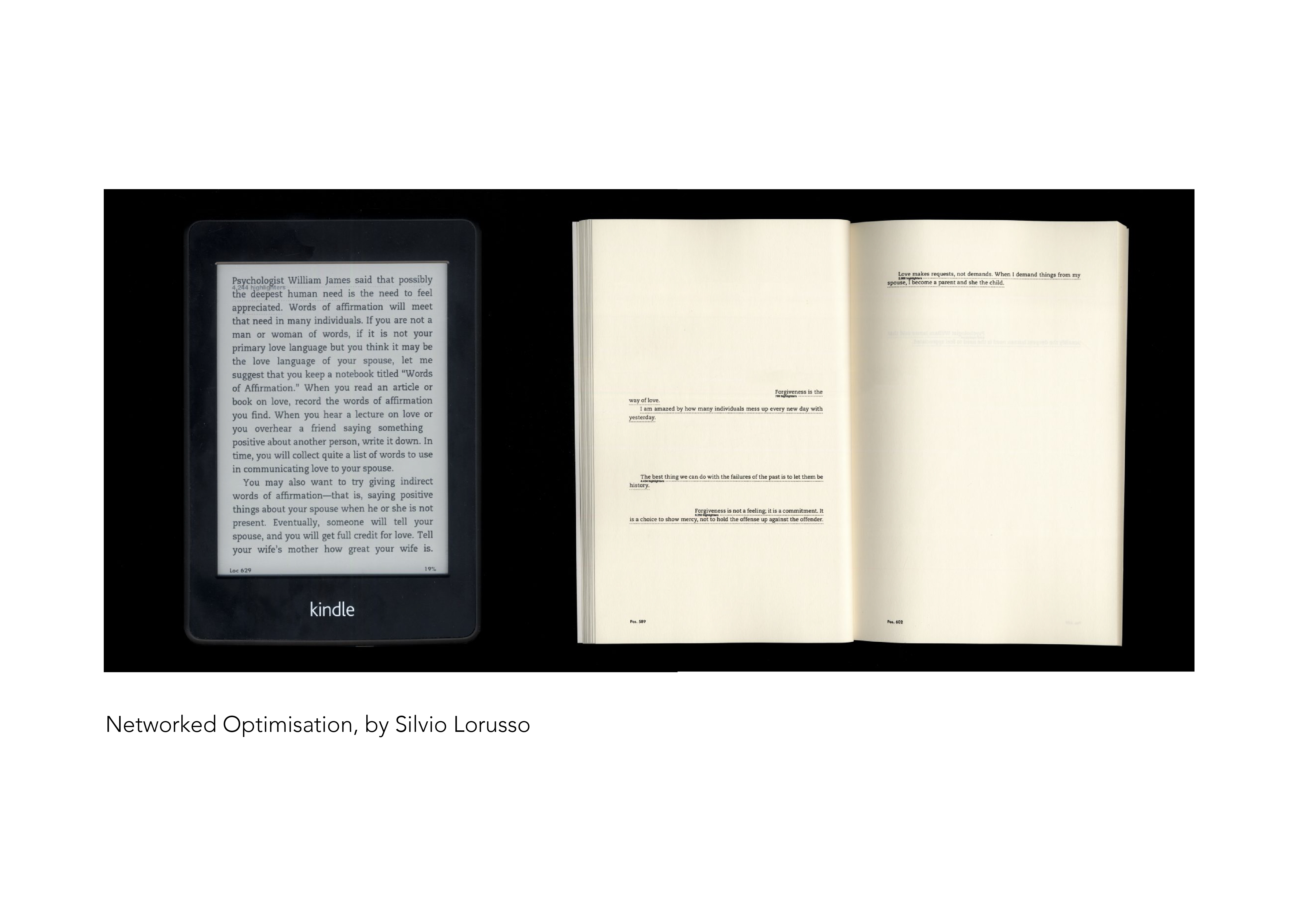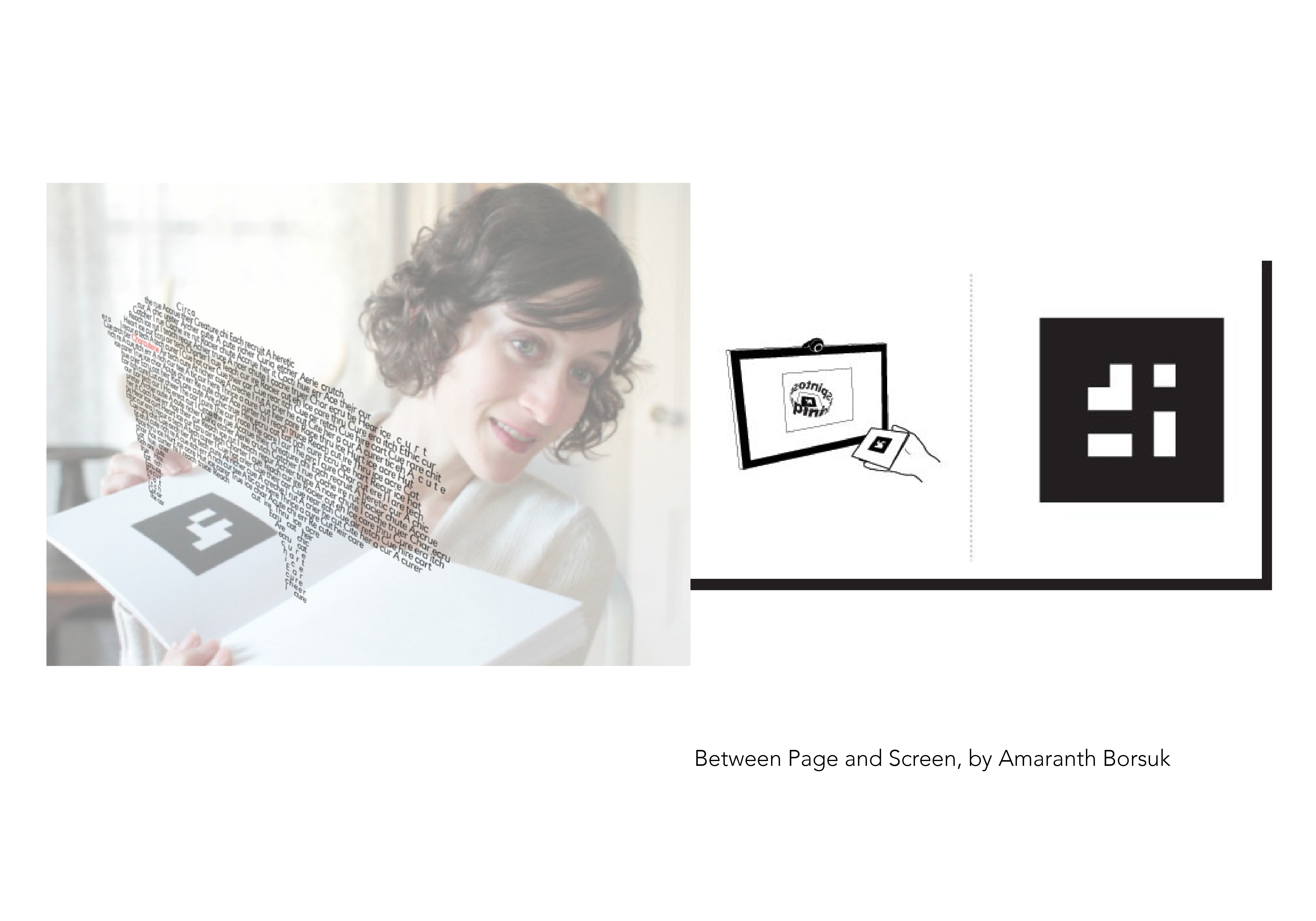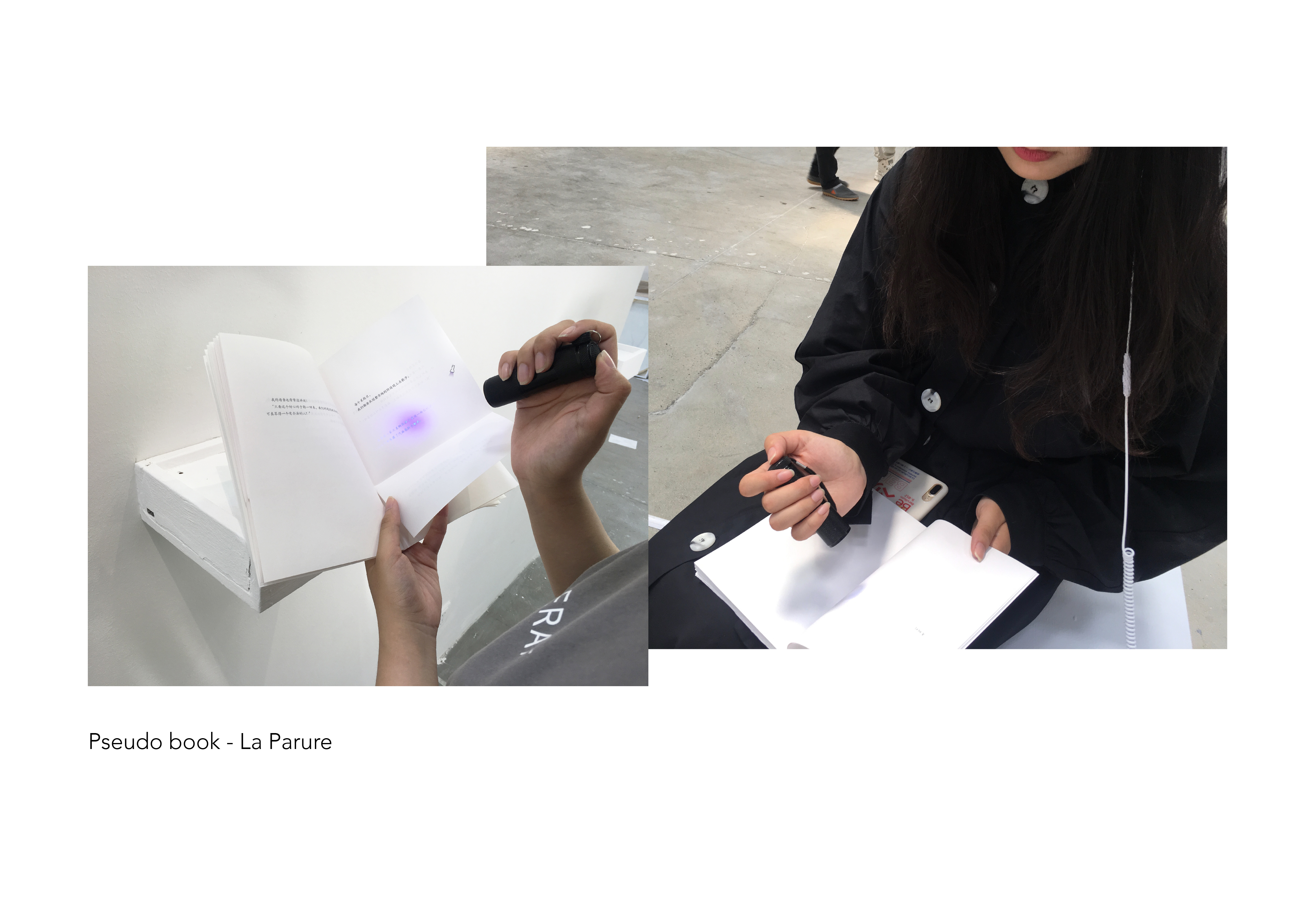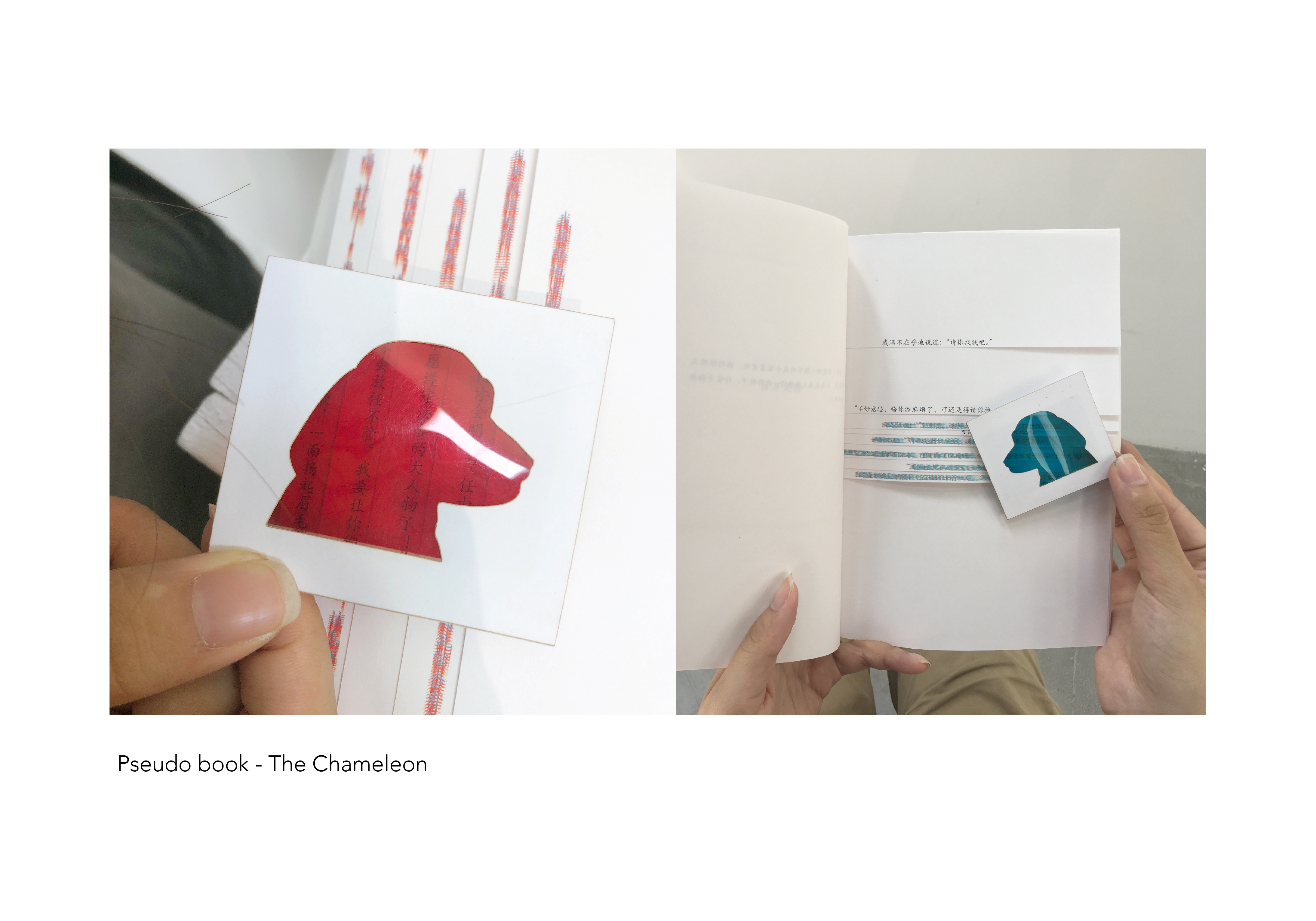The participant around Digital art book
In today's plenitude society filled with digital and analogue products,
what is the digital artist's book? Who is the reader?
produced by: Mengdi Li
Introduction
This article will introduce the digital art book based on the relationship between content and object book in three layers and details the book performance. Furthermore, shift position from the author to the content audience and analysing the impact of multitasking on the public.In a world flooded with knowledge, content no longer ties to specific media or classical formats which can produce and distribute digitally. This article will introduce the digital art book based on the relationship between content and object book in three layers and details the book performance. Furthermore, shift position from the author to the content audience and analysing the impact of multitasking on the public.
Art History behind digital artist book
"Abstract expressionism" is known as the turning point from modern to contemporary art. Which ushered in a movement away from the content of the picture, and focuses on the process. Contemporary art meets significant characteristics such as Oriented towards the "content", Ironic, usually used to self-referential. Much more modern arts are included such as Pop art, minimalism and conceptual art. The core part of contemporary art is the experience of the artwork's viewer. However, for computational arts, it orientates towards new, state-of-the-art computer technology. Majority of the computational artist prefer to use new technology seriously to question the historical and political impact behind. How about not only focus on users' experience but also flourishing the range of content of the technology? It is much easier for authors to publish a work on the Internet than before, the content becomes diversification and numerous individuals involved, like the spread flourish of TikTok. Due to the highly shared of the content, "Liquid content" has been talked last few years. The story becomes blogs, games and apps and widely shared. Audience in digitisation prefer to involve in the content to become a user, and consumers are becoming "prosumers" in the media-saturated consumer culture. Digitisation has fundamentally changed and malleated writing and graphic design for the book art.
The framework of digital artist work
"If all the various elements or activities which contribute to artists' books as a field are described what emerges is a space made by their intersection, one which is a zone of activity, rather than a category into which to place works by evaluating whether they meet or fail to meet certain rigid criteria." Johanna Drucker wrote in The Century of Artists' Books. From oral Myth to parchment, until paper mill and screen-based media, the evolution of books are innovating with technologies in different social institutions. Digital media has become an essential conveyor for this information era which developed the written word and the visual graphic. What is a digital artist book? How could we play with digital artists' books? Alexander Mouton briefly introduces the possible configuration in his article WHAT IS A DIGITAL ARTIST BOOK ANWAY? Based on the intimacy between content with the physical book, the digital artbook could separate in three layers: digital production, digital hybrid and digitally born.
- Digital production
Networked Optimisation is a project designed by Silvio Lorusso. It is a series of three crowdsourced versions of popular self-help books. The whole book is full of the white font with white background, the only black text that remains readable is the so-called popular highlights marked by Kindle users and authors to Amazon itself. This optimisation collection of books could adequately show the data after participants reading or using this book and demonstrate the hierarchy among sentences which could be useful feedback for both readers and authors.
- Digital hybrid
Compared to the traditional content publisher, new media maker could add multisensory content such as audio, films, comics or merchandising items. Ethereal Landscapes is an interactive computer artwork made by Christian Faur & Alexander Mouton. The content of the book turns to a form of barcodes as the interface between a physical object and a virtual space. Based on the barcodes which are changed by flipping pages, real-time video and audio could generate to make participants immersed. Electronic methods sublimate the images referenced throughout the video under each barcode as content.
Between Page and Screen is a book that blurs the boundaries between the virtual world with reality. There only is a square printed on the paper, no extra text on the screen unless the reader interacts as showing screen the book. This interactive method flexes the text layout and breaks the limited-edition handbound and letterpress-printed artists' book.
- Digitally born
The interactive book made by Visualsupport is a digital artbook which contains no physical text and virtual content. It is a book-shaped touchscreen mimic the flip gesture. Moreover, as part of contemporary society, eBooks and iPad deliver the content successfully with multisensory and functionality. " SXSW: Sony's futuristic projector turns tabletops into interactive playgrounds. Sony's R&D Future Lab has unveiled some cutting-edge, experimental projects at the South by Southwest Interactive Festival (SXSW) taking place in Austin, Texas, including a projector that can turn any flat surface into an "Interactive TableTop" and bring objects to life. The demonstration of this project is an interactive Alice's Adventures in Wonderland book. As the storyline advances, characters can interact with virtual scene props more intuitively. Most museums have used this type of augmented reality technology to demonstrate their collections. However, due to the high cost, it is difficult for general content publishers to bear this financial burden.
These are great digital projects to demonstrate digital artists' book. However, for the traditional content author, they are still facing a big challenge as lacking handling media convergence to innovate their work. On the other side, artists need core content to flourish their work. Art is not only flourishing artists themselves, but also help authors growing their content world and then blur the boundary and remix artist and author. The optimal collaboration between the artist and author could be vivid the project.
An experiment of the digital artist book
Pseudo book is one of my projects before. It is an interactive experience which delves a connection toward readers and physical book based on the literary novel. It satirises the stereotype phenomenon of mass-produced book and juxtaposes human hypocrisy elements in society. Critical literature is selected and rebuilt with specific sound to immerse participants by using photo resistance to control the user's manner.
Human hypocrisy
English author and literary critic David John Lodge used to describe a literary game called "Humiliations" in his novel Changing Places. In this game, participants need to confess the titles of books they have never read. The genius part is that each player gains a point for the fellow player who has read the book, which means less reader accomplished, more score they got. The winner of this game is an American professor who announced that he had never read Hamlet.
Compared to honestly admitting that they have not read a specific book, the majority of people have done another thing: pretend they have read this book. A pseudo book refused to have a book cover and introduction content to prevent the emerging of hypocrisy. The multisensory feeling from the physical book could inspire an emotional release and bring empathy to audiences, and electronic devices could offer the experience of flow. The first view from readers is a nude book with direct words, and the essence of each book needs to be dug by readers' independent thinking.
Once the participant opens the book, a voice will whisper in the reader's ear. The words of voice are selected tied with each storyline combined to a rhythmic sound. The vibe voice is an invisible part for the stories to demonstrate the inside world toward each actor. The role of voice here is interfering people's attention which is like the impetuous mentality when they want to read a book in this digital era.
What is the content of Pseudo book?
One of this series of books is called The Chameleon. It is a short novel written by Anton Chekhov. The story tells a police officer Ochyumelov passing by a man bitten by a dog, the dog's future destiny fluctuates depending upon the following information as to who the owner of the culprit might be. To dramatise his attitude shifting toward the affair, the text designs in a different colour. Participants could only read it by using a binary tinted lens and changing eyeballs from side to side following the story evolves.
La Parure is another book from Pseudo book written by Maupassant. Readers could see the cheap furniture in the protagonist's situation printed on the page as a bird' s-eye view. Still, her fake eager toward elite society is hidden by the invisible ink, which could only be seen by UV lights, and this is why she was tortured by fate. These invisible things that happened in the narrative usually caused by the economic disparity and stereotype of the society.
Evaluation and Improvement
Instead of a typical linear progression from the author to the designer to the publisher to the reader, books could be considered as instantiations in an ongoing, communicative performance. For further development, participants could be not only the reader but also a player. Pseudo book only consists with short novelette due to the limitation of innovation electronic technology, the interaction design among readers and books is the only single form which could be improved to immerse readers better in the future. It could be a game not only shown on the screen but relied on the physical book stage by using Augmented Reality or Virtual Reality method.
The audience of book and Multitasking Behavior
Due to the power of digital narrative, the role of images and texts are becoming the key component of humanitarian action. So, who is the reader of books? Jay David Bolter blurred the boundaries between privileged and popular arts in his book The Digital Plenitude: The Decline of Elite Culture and the Rise of New Media started with an introduction about general history. The United States has experienced "high" art forms with opera and classical music highly enjoyed by educational capital class. Then during the period with Bauhaus, Constructivists, Futurists and Dadaists, art gradually integrate into everyday life instead of noticing the collapse of traditional hierarchies of art. Combined with the emerging of innovation technology, rock music appears with the rebellion spirit populated among the young generation. The world now is a complex cultural landscape filled with catharsis and flow, originality and remix, organic/spontaneous and procedurality/datafication, history and simulation. Readers now could be satisfied with not only accepting instilled content but also involved with the content. What may be the next step?
What are the reverberations of multi-culture? Bolter wrote on his final chapter pointed out the repercussions of multiplicity culture based on the presidential candidate who is lack of education or expertise. One of another impact about diversity is the higher rates of multitasking. Not only young generation, from Baby Boomers to Generation z, but people also accustom to multitask heavily with personal devices in various situation, universal known as using phone talk to someone while surfing the web or emailing while listening to the radio.
Multitasking has a range of potential positive and negative effects which made the factory efficiency and also caused predicament like dividing attention and reducing memory, especially at school. Fundamental limitations in our psychological architecture that include perceptual constraints have already known by the cognitive psychologist. An experiment toward students by Rosen et al. (2011) shows that the amount of interference due to texting was related to how quickly a student responded to a text. If the audience of the book received too many feelings simultaneously, can they focus on the content of the book? How could the artist prevent the audience from stuck in chaos apart from the artist who wants participants experience mess?
Self-assessment is an efficient method to reduce dividing tension while multitasking during daily life. Especially stop the hand side thing and change the environment or the people's view. The reasonable proportion of multisensory interactions is significant, with balance and rhythm during the interacting experience.
In conclusion, the digital artist book could consider from content and carrier as the configuration. Art is no longer the player from the elite class, artists could use an innovative method to collaborate with the content producer and enrich the technical world.
Annotated Bibliography
- Mouton, Alexander. "What Is a Digital Artist Book Anyway?" JAB: The Journal of Artists' Books 33 (2013): 34-37. Web.
Alexander Mouton is an Assistant Professor of Digital Art and Design, Seattle University, WA. This article is the reference I used to divide the digital artbook. This article discusses the highlights of the presentation titled "What Is a Digital Artist Book Anyway?" at the 2012 annual conference of the College Book of Art Association. Digital media was briefly contextualised in the history of the book, followed by an introduction of three possible configurations for digital artists' books. The presentation concluded with rhetorical questions on how book artists might engage with digital media within book art programs.
- Jay David Bolter, "The Digital Plenitude: The Decline of Elite Culture and the Rise of New Media" (Cambridge, MA: MIT Press, 2019),8.
Jay David Bolter is Wesley Chair of New Media and Codirector of the Augmented Media Lab at Georgia Institute of Technology. Jay David Bolter traces the roots of our media multiverse to two developments in the second half of the twentieth century: the decline of elite art and the rise of digital media. Bolter explains that we no longer have a collective belief in "Culture with a capital C." The hierarchies that ranked, for example, classical music as more important than pop, literary novels as more worthy than comic books, and television and movies as unserious have broken down. The art formerly known as high takes its place in the media plenitude. The elite culture of the twentieth century has left its mark on our current media landscape in the form of what Bolter calls "popular modernism." Meanwhile, new forms of digital media have emerged and magnified these changes, offering new platforms for communication and expression.
- L. Mark Carrier, Larry D. Rosen, Nancy A. Cheever, Alex F. Lim, Causes, effects, and practicalities of everyday multitasking, Developmental Review, Volume 35, 2015, Pages 64-78, ISSN 0273-2297, https://doi.org/10.1016/j.dr.2014.12.005 (http://www.sciencedirect.com/science/article/pii/S0273229714000513)
Everyday multitasking with electronic devices is common among all age groups, but the youngest generations of persons carry out the most everyday multitasking, especially in the form of media multitasking. Multitasking via technology in school settings or at home while studying is common for students. Both external factors (e.g., alerts from smartphones) and internal factors (e.g., thoughts about future online activities) influence multitasking prevalence. Although laboratory research has shown that performing concurrent tasks is subject to processing bottlenecks and to switch costs, real-life everyday multitasking is different from laboratory dual-task scenarios in several ways, including having more than two tasks involved, proceeding by interleaving tasks over extended periods of time, and allowing more flexibility in resource allocation and setting of priorities. Theoretically, everyday multitasking should be capable of achieving some processing efficiencies. Yet, empirical research shows that studying, doing homework, learning during lectures, learning from other sources, grades, and GPA likely are all negatively affected by concurrent multitasking with technology. Young people who frequently multitask compared with other young people may be poorer at ignoring irrelevant environmental information, but the effects of extreme multitasking on other cognitive outcomes are not clear-cut. There are strategies that people of all ages can use to minimize multitasking and reduce distractions when they are performing important tasks such as studying or doing homework.
Reference
- Song, Sandra. "The Digital Challenge for the Book Industry: A Viewpoint of Frankfurt Book Fair." New Library World 113.7/8 (2012): 343-50. Web.
- Lev Manovich. "The Death of Computer Art" Discussion Oct.22 1996
- Mouton, Alexander. "What Is a Digital Artist Book Anyway?" JAB: The Journal of Artists' Books 33 (2013): 34-37. Web.
- Lorusso, Silviolorusso. "Networked Optimization" https://silviolorusso.com/work/networked-optimization/
- Amaranth Borsuk and Brad Bouse, Between Page and Screen (Los Angeles: Siglio Press, 2010-12).
- Amaranth Borsuk, "Between Page and Screen," 2010, betweenpageand- screen.com.
- "CodeBox : Free PDF to Flash Page Flip converter," Codebox : Web coders in a box, 2012, codebox.es/pdf-to-flash-page-flip.
- Christian Faur and Alexander Mouton, Ethereal Landscapes, (OH: Un-seen Press, 2008).
- Mouton, Alexander. "What Is a Digital Artist Book Anyway?" JAB: The Journal of Artists' Books 33 (2013): 34-37. Web.
- McCarthy, Steven. "Book Art: A Critical Remix of The Electric Information Age Book." Visible Language 49.3 (2015): 179. Web.
- Google Arts & Culture "What's the Difference Between Modern and Contemporary Art?" https://artsandculture.google.com/theme/what-s-the-difference-between-modern-and-contemporary-art-%C2%A0/vwKiW17vbvl3JA?hl=en
- Hyacinth Mascarenhas. "SXSW: Sony's futuristic projector turns tabletops into interactive playgrounds" (2016): Web. https://www.ibtimes.co.uk/sxsw-sonys-futuristic-projector-turns-tabletops-into-interactive-playgrounds-1549381
- Jay David Bolter, "The Digital Plenitude: The Decline of Elite Culture and the Rise of New Media" (Cambridge, MA: MIT Press, 2019),8. https://www.digitalplenitude.net/
- Skouras, Maria. "The Digital Plenitude: The Decline of Elite Culture and the Rise of New Media by Jay David Bolter (review)." The Velvet Light Trap 85.1 (2020): 89-91. Web.
- Carrier, L. M., L. D. Rosen, and J. N. Rokkum. 2018. "Productivity in Peril: Higher and Higher Rates of Technology Multitasking." Behavioral Scientist, January 8. https://behavioralscientist.org/productivity-peril-higher-higher-rates-technology-multitasking/
- L. Mark Carrier, Larry D. Rosen, Nancy A. Cheever, Alex F. Lim, Causes, effects, and practicalities of everyday multitasking, Developmental Review, Volume 35, 2015, Pages 64-78, ISSN 0273-2297, https://doi.org/10.1016/j.dr.2014.12.005 (http://www.sciencedirect.com/science/article/pii/S0273229714000513)
- Paton, D. 2012, "Towards a theoretical underpinning of the book arts: Applying Bakhtin's dialogism and heteroglossia to selected examples of the artist's book", Literator, vol. 33, no. 1, pp. 1-11. https://search-proquest-com.gold.idm.oclc.org/docview/1243104424?accountid=11149&rfr_id=info%3Axri%2Fsid%3Aprimo#





































































